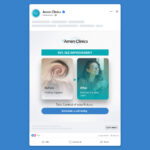Introduction: The Unexpected Power of Simplicity
Let’s talk about my highest lead-converting ad copy to date. You might expect it to be a sophisticated blend of marketing jargon and convoluted sales language. But, surprisingly, it’s far simpler than that. Here it is: “Imagine waking up and realizing your inbox is full of people who want to work with you.” Intrigued? Let’s delve into the nuts and bolts of this deceptively simple strategy.
Benefits: Unlocking the Potential of Your Ad Copy
Emotional Resonance: More than Just Words
The right words can touch a chord, create a longing, or ignite an aspiration. By leveraging emotional resonance, your ad copy can attract more clicks and spark meaningful interactions. And when your copy appeals to your audience’s strong desire – like a steady stream of clients – it goes beyond being just words.
Painting Vivid Imagery: Captivate with Storytelling
“Imagine waking up and realizing your inbox is full of people who want to work with you.” Can you see it? The picture that this sentence paints? That’s the power of storytelling in ad copy. By creating a strong visual, you can engage viewers and leave a lasting impression.
Simplicity and Directness: The Art of Getting to the Point
There’s an art to being straightforward. In the fast-scrolling world of social media, your ad copy must catch attention quickly. Keep it simple, keep it direct, and watch the magic unfold.
The Problem-Solution Tactic: Addressing the Elephant in the Room
Every effective ad copy subtly addresses a common problem and offers a solution. By hinting at the issues your audience faces, and how your product or service can solve them, you’re creating a compelling and practical connection with your viewers.
Personalization: Speaking Directly to the Viewer
“I’m talking to you.” That’s what your ad copy should subtly convey. Tailoring your content to a specific demographic amplifies its effectiveness because it resonates on a personal level.
The Power of Implied Promises: Let Them Fill the Blanks
The beauty of ad copy lies in the unspoken – the implied benefits without making direct promises. This ad copy underscores the potential gains (like having more clients) without making explicit guarantees, allowing the viewers to envision what your product or service can offer.
Here’s the template:
Imagine waking up and [experiencing the benefit of your product/service.]
Here’s why this works so well:
Emotionally Engaging: This ad copy appeals to a strong desire of my target audience to have a steady stream of clients. This emotional resonance could attract clicks.
Creates a Strong Visual: “Imagine waking up and realizing your inbox is full of people who want to work with you.” This sentence makes a vivid image that can spark hope and excitement in my audience. This storytelling aspect can engage viewers and leave a lasting impression.
Simple and Direct: The ad copy is straightforward and concise, which is generally more effective on social media platforms where users quickly scroll through content.
Problem-Solution Approach: This ad copy subtly hints at a common problem (lack of clients or work) and offers a solution (a service or product that brings potential clients). This approach is often very practical because it addresses a direct need.
Speaks to a Specific Audience: This ad copy targets a particular demographic: freelancers, business owners, and people looking to expand their client base. Ads tailored to a specific audience tend to perform better because they speak directly to the viewer’s needs and desires.
Implies a Promise or Benefit: The ad copy hints at a benefit (having more clients) without an explicit promise. This allows the viewer to fill in the blanks about what your product or service can offer.
Wrapping Up
So, what’s next? Are you ready to dive deeper into the world of high-converting ad copies? Do you want more ad copy templates and logical breakdowns to refine your marketing strategy? Let’s keep the conversation going.
P.S. Remember, the art of ad copy lies in simplicity and directness. It’s about speaking directly to your audience and letting them fill in the blanks.
Why complicate when you can simplify?






